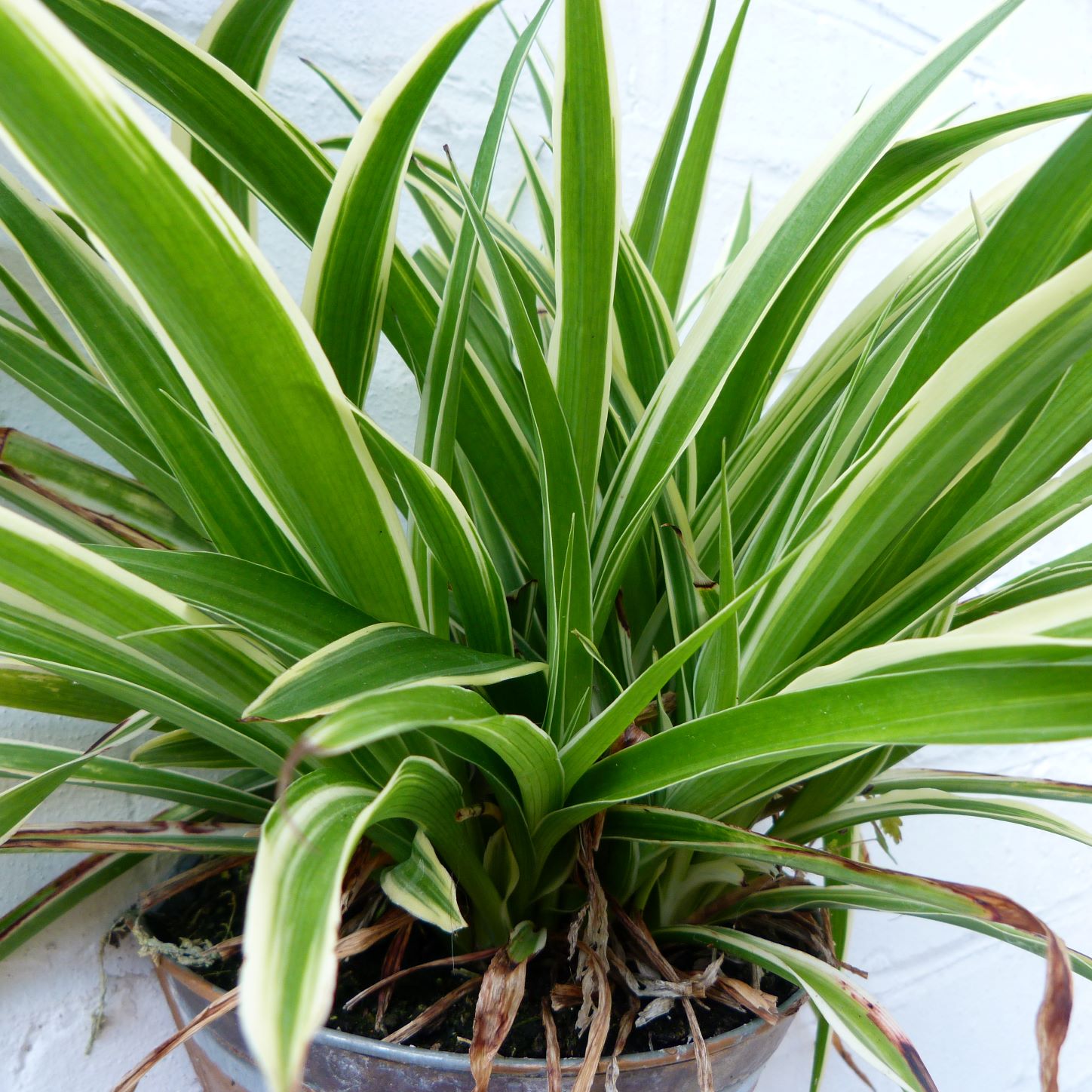The Reason Your Spider Plant Has Brown Tips:
Chlorine/Fluoride in your tap water. Chemical buildup in the soil from tap-water will cause brown tips. Leave your water in an open container overnight to help evaporate some of these chemicals. This makes it safer to use on your plants and less likely to cause discoloration on the leaves.
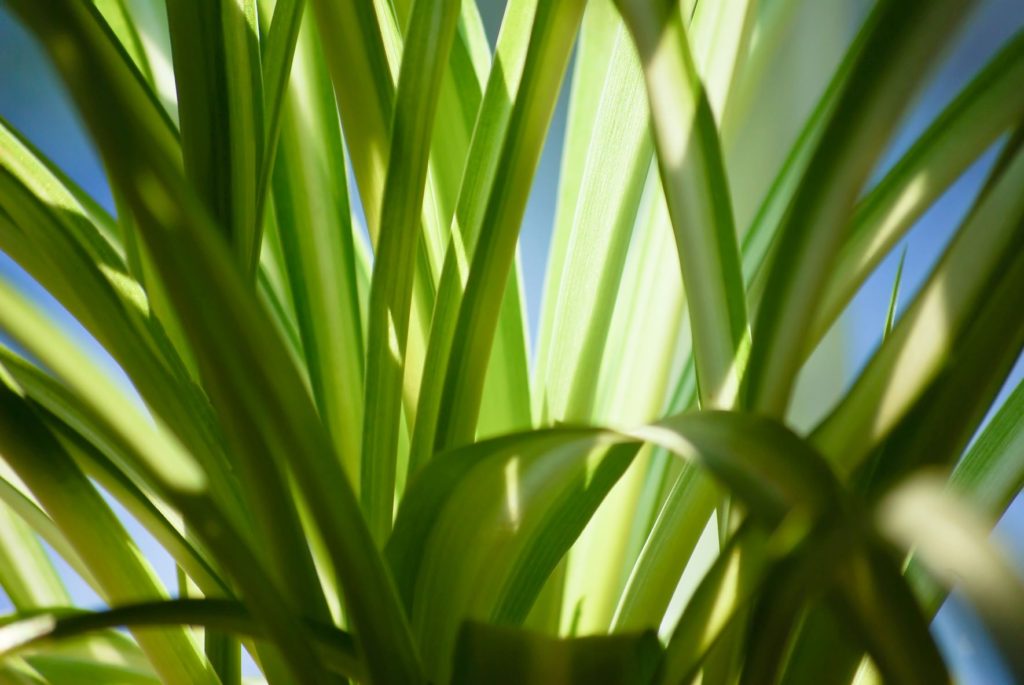
Here are the Reasons Your Spider Plant has Brown tips:
- Chlorine/Fluoride. A buildup of these chemicals in your plant will eventually cause brown tips and discoloration on spider plant leaves.
- Too much sunlight. Direct sunlight can harm your spider plants causing browning on the leaves .
- Overwatering/Underwatering. Inconsistent watering schedule can induce stress in your spider plant.
- Insufficient Humidity. 40-55% moisture level in the air is what your spider plant requires to remain in a healthy state. A HYGROMETER can be used to monitor moisture levels in the air.
- Fertilizer Over-saturation. A buildup of salts and nitrates in your soil can cause damage to your plants leaves and roots.
- Leaves are touching a surface. Leaves touching a wall or leaning against a surface can cause wilting or discoloration. Move the plant so the leaves are not touching anything and have room to grow freely.
How to Fix Brown Tips on Spider Plants
Use Purified water. Water that has been distilled, bottled or collected from rainfall is the best type of water you can give your plants and will greatly help with preventing brown tips in the future.
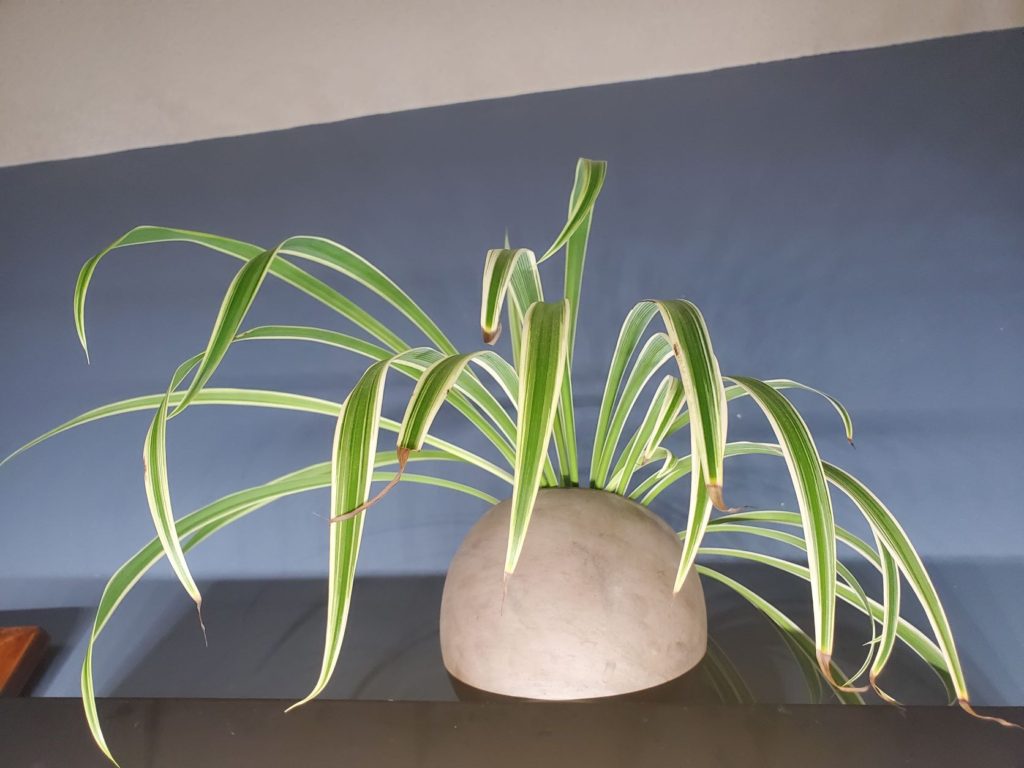
- Purified water. Use distilled water only or Remove Chlorine and Fluoride from tap water (see below)
- Collect rainwater. Rain water contains no harmful chemicals and is the best type of water to give your plants
- Keep humidity above 55%. A dry climate that surrounds your plant will sap moisture from the surrounding area and dry out your plant.
- Rinse Soil Thoroughly. Chemical buildup in your soil can be flushed using clean distilled water.
- Well Draining soil. Drill more holes in the bottom of your plant pot if necessary, you plant needs to be able to drain completely or you may experience root rot.
- Repot plant. Introduce fresh new sterile soil to help the plant recover more quickly from chemical buildup in the soil.
- Remove leaves with brown tips. The leaves will never become green on their tips, cutting these off will stimulate more growth.
Can I Cut The Brown Tips Off My Spider Plant?
Yes. Carefully remove the brown tipped leaves with a pair of scissors or gardening clippers. Removing dead leaves will also help stimulate growth and improve the plant’s appearance. Removing too many could harm the plant, so be sure to leave some leaves intact so it is still able to photosynthesize effectively.
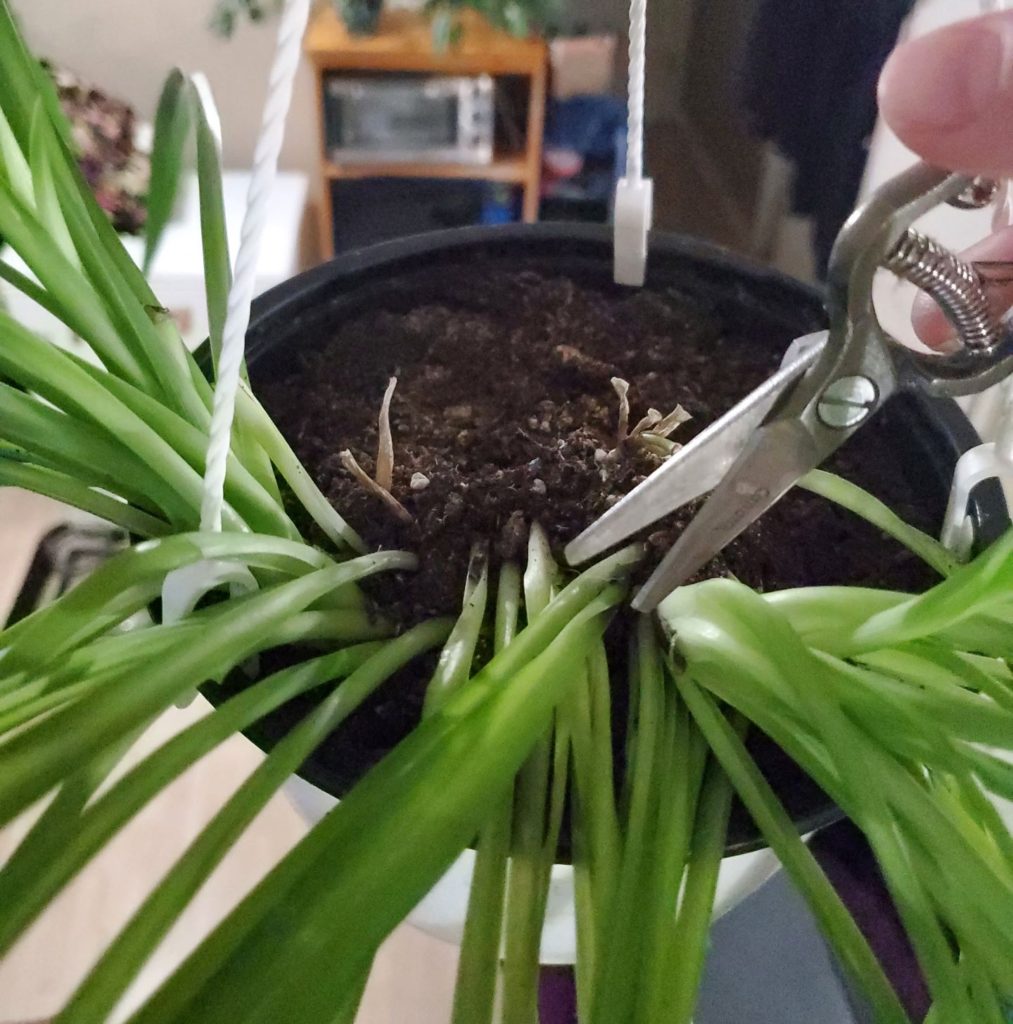
Here’s the best way to cut brown tips off your spider plant:
- Use clean gardening shears/scissors.
- Cut the leaves at the base of the stem.
- Remove any dead leaves from top of soil.
- Discard any dead leaves into the trash or compost.
How to Remove Chlorine and Fluoride From Water?
Leave tap-water in an open container overnight. The chemicals will mostly evaporate out of the water and will become safer for you plants. Using de-chlorinated water is less likely to cause brown tips in your plants. Spider plants are especially sensitive to chemicals in the water, and brown tips will start to show if you use tap water. You can fix your tap-water by following these instructions below:
- Fill a container with tap water, I fill a few empty pop bottles and keep them ready in for when I need them.
- Let container sit open, exposed to the air, overnight.
- After 18-24 hours, most of the chemicals have evaporated and the water is now ready to use on all your plants.
- Alternatively, you can leave an open container outside and let the rain fill it up, this is a great way to collect purified water that is safe to use on your plants.
Why Does My Spider Plant Look Pale and Limp?
Lack of water. Spider plants will sometimes begin to droop and the leaves will appear sickly and pale. This is a sign that your plant is not getting enough water. The soil will also seem hard and crusty, give your plant a good soak for 10 minutes with purified water. Here are the reasons your spider plant has become pale and limp:
- Underwatering. Lack of moisture in the soil will cause the plant to shrivel and become limp.
- Not enough sunlight. A lack of sunlight will cause your plant to droop and lose it’s green colour.
- Not enough fertilizer. Nutrient deficiency overtime can affect the plants growth and it will appear stagnant.
- Too much heat. A hot environment could cause your plant to show signs of stress.
How to fix a pale and limp spider plant?
If your spider plant is showing these signs of stress, like lack of colour or droopiness, follow these tips below to help resuscitate your plant back into good health:
- Soak Your plant in purified water. Put your plant in the sink and let the water inundate the soil for 30 mins.
- Increase humidity. 55% is the ideal moisture level for a healthy spider plant.
- Fertilize every 4 months. A dose of nutrients may be all you need to recover your droopy spider plant.
Why is My Spider Plant Turning Brown and Black?
Root Rot. Water left in the bottom of the plant pot, or caught in the soil for too long will cause the roots of your plant to rot. Overtime, the leaves will begin to droop and become brown or black with a slimy texture. It’s very difficult to recover from root rot and you will likely lose the plant. These are the some of the reasons your plant may be suffering:
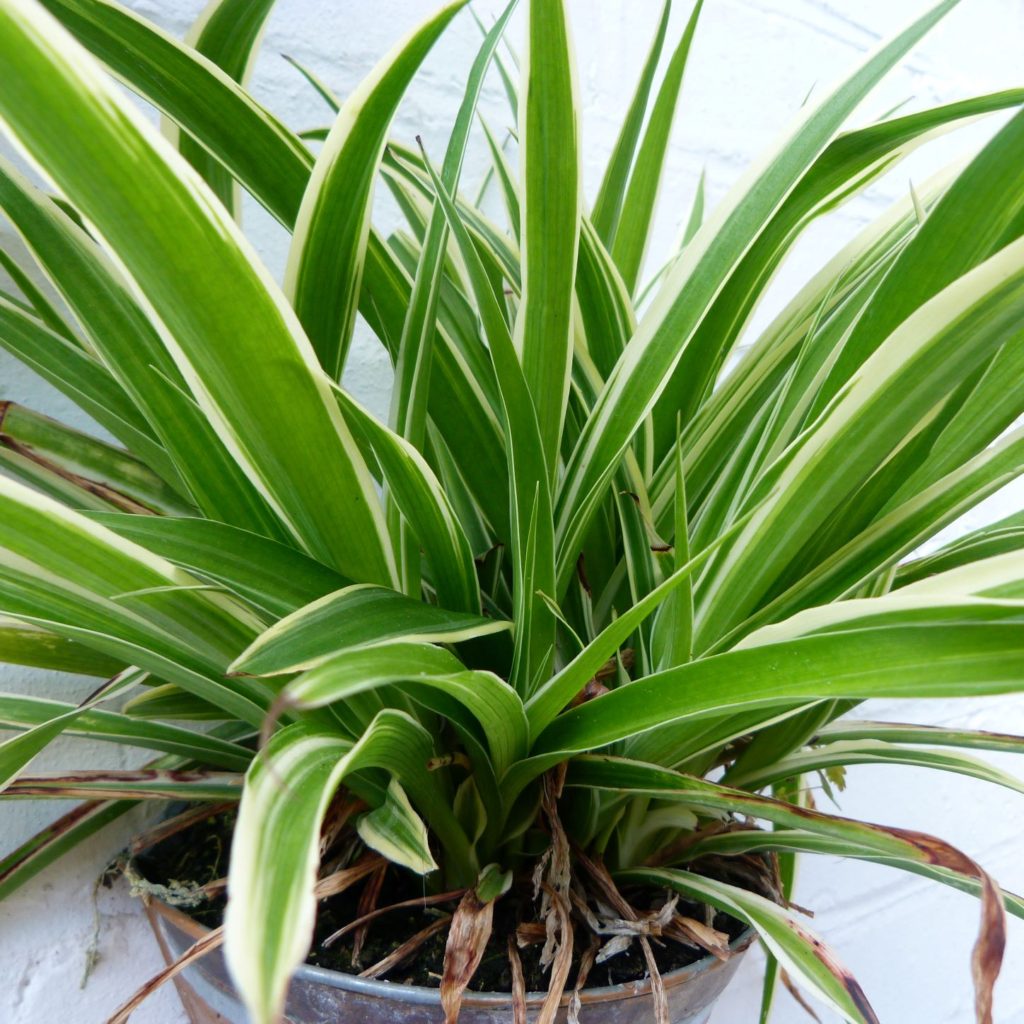
- Root Rot. Caused by poor drainage.
- Too much sun/heat. Overexposure to heat/sun will harm your plants appearance.
- Overwatering. Too much water will strip the soil of nutrients and negatively impact your spider plant’s health.
- Too much fertilizer. A buildup of chemicals in the soil can kill your plants, be sure to use as directed.
How to fix a spider plant that is turning brown and black?
Follow these directions below to help resurrect a dying spider plant:
- Repot. A fresh batch of new soil will boost growth, and your spider plant won’t be stifled by the rotten roots caught in the old soil.
- Improve drainage. Proper drainage ensures that root-rot will not happen again in the future.
- Remove dead leaves. Getting rid of the dead bits will encourage your plant to replace them with new leaves.
- Adjust lighting. Make sure your spider plant is in a bright location, but not in the direct sunlight.
Why is My Spider Plant Turning White and losing Color?
Some spider plants have white on their leaves, this is a natural variation of the species. However, if your plant is not known to have white on it’s leaves, it may be under some stress. Here are some reasons that your spider plant may begin to lose it’s color and begin showing white leaves:
- Too much sunlight / Not Enough Sunlight. Too much of either can cause a bleaching effect in the leaves.
- Iron deficiency. A proper fertilization routine with higher nitrates can help alleviate this problem.
- Fluoride/chlorine in tap water. Be sure to use the method above to remove these chemicals from your tap water before giving it to your plants.

